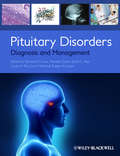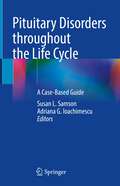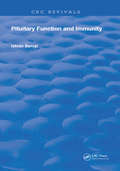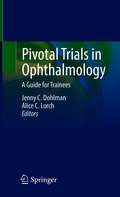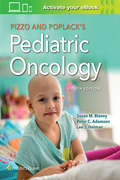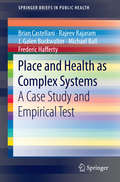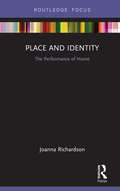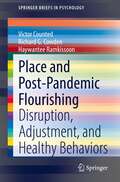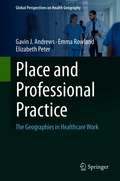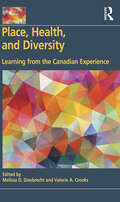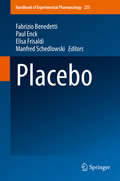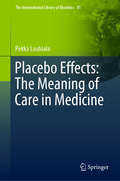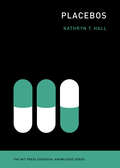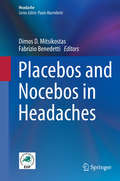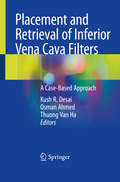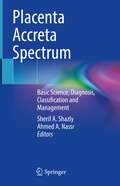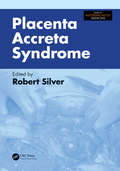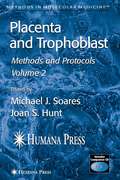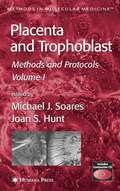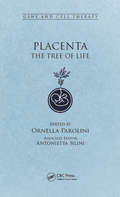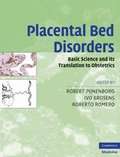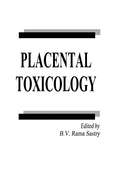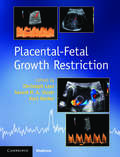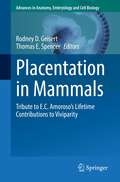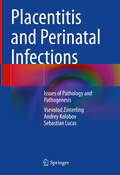- Table View
- List View
Pituitary Disorders
by Linda Rio Edward Laws Sylvia Asa Shereen EzzatDo you want to be up to date on the latest concepts of diagnosis and treatment of patients suffering from disorders of the pituitary gland?Are you looking for an expert guide to the best clinical management?If so, this is the book for you, providing a full analysis of pituitary disorder management from acromegaly to Addison's Disease; from Cushing's Disease to hypopituitarism; from hormone disorders to hormone replacement Well-illustrated throughout and with contributions from leading specialists in pituitary disease, inside you'll find comprehensive and expert coverage, including:Diagnosing pituitary diseaseManagement options for each disorderComplications that can occurPsychological and psychosocial effects of pituitary diseaseWhat outcomes you and your patients can expect over the long termCurrent research and clinical trials related to pituitary diseasePituitary Disorders: Diagnosis and Management is the perfect clinical tool for physicians and health care providers from many related disciplines, and an essential companion for the best quality management of pituitary patients.
Pituitary Disorders throughout the Life Cycle: A Case-Based Guide
by Susan L. Samson Adriana G. IoachimescuThe pituitary gland is often referred to as the master gland, coordinating hormonal signals from the hypothalamus and peripheral circulation to maintain homeostasis in the body. Patients with pituitary dysfunction are faced with challenges unique to each stage of their life cycle. For example, the goals of management for a hypopituitary adolescent transitioning to adulthood would be to optimize growth and sexual development. In early adulthood, approaches that optimize of fertility in men and women can be a priority, and the management approach will be very different from that of older adults requiring sex hormone replacement. This case-based guide will provide practical clinical guidance on approaches to the management of pituitary disorders organized by time of life, from childhood and fertile years through to older age. Sensibly divided into sections, various pituitary disorders and conditions are described and relevant treatment strategies are outlined. Sections included discussions of the unique considerations for the pituitary gland in childhood and adolescents, patients desiring fertility and pregnant patients, health optimization and non-tumoral diagnoses in adults, and management of disorders of the hypothalamic-pituitary axis in the elderly. Each chapter presents a clinical case vignette as an introduction to the concepts and a framework for the discussion of the diagnosis, management and unique consideration of each pituitary pathology. Practical and user-friendly, Pituitary Disorders throughout the Life Cycle is an excellent resource for practicing clinical endocrinologists (pediatric, transitional care, adult) and reproductive endocrinologists as well as specialty residents and trainees.
Pituitary Function and Immunity (Routledge Revivals)
by Istvan BercziFirst published in 1986, the influence of hormones secreted or regulated by the pituitary gland on the immune system is examined in detail, including discussions of adrenocorticotropic hormone, glucocorticoids, catecholamines, growth hormone, insulin, prolactin, gonadotropins, sex steroid hormones, and thyroid hormones. The relative importance of various hormones in immunoregulation is considered, and evidence for interaction between the immune and neurohormonal systems is presented. The possible effects of hormonal immunomodulation in reproduction, infections and parasitic disease, autoimmu-nity, and cancer are examined. This comprehensive reference serves both basic and clinical researchers and practitioners in immunology, microbiology, endocrinology, reproduction biology, neurology, oncology, psychology, medicine, and veterinary medicine.
Pivotal Trials in Ophthalmology: A Guide for Trainees
by Jenny C. Dohlman Alice C. LorchPivotal Trials in Ophthalmology: A Guide for Trainees is an introductory text designed to give trainees a comprehensive and accessible overview of landmark trials in the different subspecialties of ophthalmology, and may also serve as a useful reference for practicing ophthalmologists, optometrists and researchers in the field. The text is subdivided by subspecialty, with each chapter authored by both a trainee and an expert in the field. A selection of pivotal research studies that have shaped how practitioners diagnose, manage, and treat disease are reviewed in chronological order. The purpose, study design, results, and study limitations are reviewed, and the key takeaway points from each study are listed in a digestible, bullet-point format. By listing the studies in chronological order, the reader will have an understanding of how studies have built upon each other and how knowledge has evolved over time.This text can serve as a basic introductory text for first year ophthalmology residents around which a standardized curriculum can be shaped, a study guide for board examination study, or a reference text for practitioners and researchers at any stage of training and practice.
Pizzo & Poplack's Pediatric Oncology
by Susan M Blaney Lee J Helman Peter C AdamsonComprehensive, authoritative, and up to date, Pizzo and Poplack’s Pediatric Oncology, 8th Edition, remains your most trusted source of information on the care and research of children with cancer. This award-winning text is the single most comprehensive reference on the biology and genetics of childhood cancer, its diagnosis and multimodal treatment, and long-term management. In the tradition of excellence established by Drs. Philip A. Pizzo and David G. Poplack, this 8th Edition keeps you fully informed while helping you collaborate more effectively with others on the cancer care team to enhance quality-of-life issues for patients and families.
Place and Health as Complex Systems
by Michael Ball Brian Castellani Rajeev Rajaram J. Galen Buckwalter Frederic HaffertyThe history of public health has focused on direct relationships between problems and solutions: vaccinations against diseases, ad campaigns targeting risky behaviors. But the accelerating pace and mounting intricacies of our lives are challenging the field to find new scientific methods for studying community health. The complexities of place (COP) approach is emerging as one such promising method. Place and Health as Complex Systems demonstrates how COP works, making an empirical case for its use in for designing and implementing interventions. This brief resource reviews the defining characteristics of places as dynamic and evolving social systems, rigorously testing them as well as the COP approach itself. The study, of twenty communities within one county in the Midwest, combines case-based methods and complexity science to determine whether COP improves upon traditional statistical methods of public health research. Its conclusions reveal strengths and limitations of the approach, immediate possibilities for its use, and challenges regarding future research. Included in the coverage: Characteristics of places and the complexities of place approach. The Definitional Test of Complex Systems. Case-based modeling using the SACS toolkit. Methods, maps, and measures used in the study. Places as nodes within larger networks. Places as power-based conflicted negotiations. Place and Health as Complex Systems brings COP into greater prominence in public health research, and is also valuable to researchers in related fields such as demography, health geography, community health, urban planning, and epidemiology.
Place and Identity: The Performance of Home (Routledge Focus on Housing and Philosophy)
by Joanna RichardsonThe UK is experiencing a housing crisis unlike any other. Homelessness is on the increase and more people are at the mercy of landlords due to unaffordable housing. Place and Identity: Home as Performance highlights that the meaning of home is not just found within the bricks and mortar; it is constructed from the network of place, space and identity and the negotiation of conflict between those – it is not a fixed space but a link with land, ancestry and culture. This book fuses philosophy and the study of home based on many years of extensive research. Richardson looks at how the notion of home, or perhaps the lack of it, can affect identity and in turn the British housing market. This book argues that the concept of ‘home’ and physical housing are intrinsically linked and that until government and wider society understand the importance of home in relation to housing, the crisis is only likely to get worse. This book will be essential reading for postgraduate students whose interest is in housing and social policy, as well as appealing to those working in the areas of implementing and changing policy within government and professional spaces.
Place and Post-Pandemic Flourishing: Disruption, Adjustment, and Healthy Behaviors (SpringerBriefs in Psychology)
by Haywantee Ramkissoon Victor Counted Richard G. CowdenThis book rekindles the well-known connection between people and place in the context of a global pandemic. The chapters are divided into two sections. In the first section, “Place Attachment During a Pandemic,” we review the nature of the COVID-19 pandemic and the extent of its impact on place attachment and human-environment interactions. We examine how restrictions in mobility and environmental changes can have a significant psychological burden on people who are dealing with the effect of place attachment disruption that arises during a pandemic. In the second section, “Adjusting to Place Attachment Disruption During and After a Pandemic,” we focus on adaptive processes and responses that could enable people to adjust positively to place attachment disruption. We conclude the book by discussing the potential for pro-environmental behavior to promote place attachment and flourishing in the aftermath of the COVID-19 pandemic by introducing an integrative framework of place flourishing and exploring its implications for theory, research, policy, and practice.
Place and Professional Practice: The Geographies in Healthcare Work (Global Perspectives on Health Geography)
by Gavin J. Andrews Emma Rowland Elizabeth PeterThis book presents the first single comprehensive analysis of the scope of geographical realities and relevance in health care work. Conceptually, the book conveys how space, place and geographical ideas matter to clinical practice, from the historical beginnings of professional roles and responsibilities in medicine to the present day. In 8 chapters, the book covers healthcare work across a range of job types (including physician, nurse, and multiple technical and therapeutic roles in multiple specialties), and across a range of scales (focusing on global issues and trends, national and regional particularities, urban and rural issues, institutional environments and various community settings). This book is intended for students, teachers, and researchers in geography, social science and various health sciences. Chapter 1 examines how geographical ideas have been central to practitioners' thinking and practice over time. Chapter 2 reviews the scope of contemporary geographical study of health care work. Chapter 3 presents an empirical case study of the geographies in hospital-based ward work. Chapter 4 presents an empirical case study of the geographies in ambulance/rapid response work. Chapter 5 presents a case study of the geographies associated with a high profile case of criminality and neglect in practice. Chapter 6 considers concepts and the geographies in person-centred care. Chapter 7 considers concepts and the geographies in skills attainment.
Place, Health, and Diversity: Learning from the Canadian Experience (Geographies of Health Series)
by Melissa D. Giesbrecht Valorie A. CrooksAlthough health equity and diversity-focussed research has begun to gain momentum, there is still a paucity of research from health geographers that explicitly explores how geographic factors, such as place, space, scale, community, and location, inform multiple axes of difference. Such axes can include residential location, age, sex, gender, race/ethnicity, culture, religion, socio-economic status, marital status, sexual orientation, education level, and immigration status. Specifically focussing on Canada’s rapidly changing society, which is becoming increasingly pluralized and diverse, this book examines the place-health-diversity intersection in this national context. Health geographers are well positioned to offer a valuable contribution to diversity-focussed research because place is inextricably linked to differential experiences of health. For example, access to health care and health promoting services and resources is largely influenced by where one is physically and socially situated within the web of diversity. Furthermore, applying geographic concepts like place, in both the physical and social sense, allows researchers to explore multiple axes of difference simultaneously. Such geographic perspectives, as presented in this book, offer new insights into what makes diverse people, in diverse places, with access to diverse resources (un)healthy in different ways in Canada and beyond.
Placebo
by Fabrizio Benedetti Paul Enck Elisa Frisaldi Manfred SchedlowskiDue to the recent explosion of placebo research at many levels the Editors believe that a volume on Placebo would be a good addition to the Handbook of Experimental Pharmacology series. In particular, this volume will be built up on a meeting on Placebo which will be held in Tuebingen (Germany) in January 2013, and where the most prominent researchers in this field will present and exchange their ideas. The authors who will be invited to write chapters for this volume will be the very same speakers at this meeting, thus guaranteeing high standard and excellence in the topic that will be treated. The approach of the book is mainly pharmacological, including basic research and clinical trials, and the contents range from different medical conditions and systems, such as pain and the immune system, to different experimental approaches, like in vivo receptor binding and pharmacological/behavioral conditioning. Overall, the volume will give an idea of modern placebo research, of timely concepts in both experimental and clinical pharmacology, as well as of modern methods and tools in neuroscience.
Placebo Effects: The Meaning of Care in Medicine (The International Library of Bioethics #81)
by Pekka LouhialaThis book provides a perspective on the concepts placebo and placebo effects, which has been missing so far: a detailed analysis of the history of the terms, their current use, suggested alternatives and the implications of the conceptual confusion. Everybody knows something about placebos and placebo effects. If, however, people are asked to define the concepts, the spectrum becomes wide. Does 'placebo' refer to an inert treatment or does it cover all elements of the patient-physician-interaction except for pharmacological or other physiological mechanisms? Furthermore, if, by definition, a placebo has no effect, what sense does it make to talk about a 'placebo effect'? Even in scientific literature the concepts ‘placebo’ and ‘placebo effect’ are used in many senses and often in a confusing way. While this book discusses many issues which keep puzzling physicians, it also covers the historical developments of the concepts of placebo and placebo effect as well as the conceptual confusion in the definitions. This book is intended for physicians, philosophers, psychologists and any other people interested in placebos, placebo effects and the physician-patient relationship.
Placebos (The MIT Press Essential Knowledge series)
by Kathryn T HallThe biological power of the placebo effect.The power of placebos to ameliorate symptoms has been with us for centuries. Western medicine today is finding it increasingly difficult to ignore the efficacy of placebos. In some clinical trials with placebos as controls, inert or sham replicas of active pharmaceutical drugs and even sham surgeries have been found to be as beneficial as the intervention being tested. In this volume in the MIT Press Essential Knowledge series, Kathryn Hall examines the power of placebos, showing how their effects can influence our clinical trials, clinical encounters and, collectively, Hall argues, our public health. Hall, who has studied the placebo effect for years, reviews the history of the placebo in medicine, tracing its evolution from quackery and patent medicine to its use as a control in clinical trials. She considers the ways that expectations and learning affect our response to placebos; advances in neuroimaging that reveal the inner workings of the placebo effect; the &“nocebo&” effect; placebo controls in randomized clinical trials; and the use of psychological profiles and genetics to predict individual placebo response. The effects of placebos have been hiding in plain sight; with this book, Hall helps bring them into clearer view.
Placebos and Nocebos in Headaches
by Dimos D. Mitsikostas Fabrizio BenedettiThis book discusses the role of placebos and nocebos in the treatment of headache disorders. These disorders are usually treatable, but safety and tolerability issues mean that available preventive treatments have often limited success, even in the right hands – one in five patients treated with a migraine preventive pharmaceutical agent discontinues treatment for those reasons. The nocebo effect plays a role here, with patients’ negative expectation and previous unpleasant treatment experiences creating negative belief in the treatment’s benefits and safety, which in turn limits treatment outcomes and adherence significantly. In RCTs on migraine prevention, one in 20 patients treated with a placebo discontinued treatment because of adverse events, indicating a considerable nocebo effect; the fewer potential adverse events described in the consent form, the smaller the nocebo effect. As such, physicians treating headache sufferers should acknowledge nocebo as a significant cofactor for treatment adherence and failure, and plan techniques to limit the effects, such as patient education and close follow-up. This highly informative and painstakingly presented book provides scientific insights for professionals and scholars with an interest in internal medicine, neurology and pain medicine.
Placement and Retrieval of Inferior Vena Cava Filters: A Case-Based Approach
by Kush R. Desai Osman Ahmed Thuong Van HaThis book addresses placement and retrieval of inferior vena cava (IVC) filters. Until 2010, utilization of IVC filters had been increasing since their introduction in 1967. Studies in the early 2000’s, however, identified that prolonged caval interruption with IVC filters were fraught with complications including filter fracture, migration, and caval thrombosis. This subsequently led the FDA to issue an advisory recommending judicious placement and timely retrieval of IVC filters by treating physicians. This safety advisory ultimately created a heightened awareness by medical professionals and the general public regarding the negative consequences surrounding long-term caval filtration. Subsequently, IVC filter placements decreased nationally while retrievals conversely increased in the post-FDA advisory era. During this same time period, interest in complex IVC filter retrieval also increased as a method to manage patients identified to have or be at risk for complications secondary to prolonged filter implantation.Given these established trends and interest surrounding advanced techniques in IVC filter retrieval, this book addresses these topics in a reader-friendly, case-based format. Chapters focus particularly around the recognition and management of filter-related complications. Additionally, advanced techniques employed by experienced operators for complex filter retrieval are also discussed. For completeness, the book also includes a review of indications and appropriate methods for IVC filter placement. This book is unique in that, at present, descriptions of complications and advanced techniques utilized for complicated IVC filter removal consist mainly of case reports and case series scattered throughout the literature. This publication serves to compile these sources into a single comprehensive entity for physicians treating patients with IVC filters. Chapters are organized to begin with a few introductory paragraphs highlighting the relevant literature (and providing references for in-depth reading) followed by several cases demonstrating tips, tricks, and procedural pitfalls. When possible, each case will include a step-by-step description of the technique being described.This is an ideal guide for interventional radiologists, interventional cardiologists, and vascular surgeons that perform or are interested in performing filter retrieval beyond standard techniques.
Placenta Accreta Spectrum: Basic Science, Diagnosis, Classification and Management
by Sherif A. Shazly Ahmed A. NassrPlacenta accreta spectrum (PAS), an obstetric emergency associated with significant maternal morbidity and mortality, has increasingly become a global challenge with the rising trend of cesarean deliveries. This book provides a comprehensive review of basic science-related to PAS, discusses modern practice in diagnosis and classification of PAS disorders, and appraise current recommendations on PAS management in view of recent studies, guidelines, and expert opinions.In the last few years, there have been many new updates to practice guidelines including ACOG, RCOG, and FIGO guidelines in addition to several new studies, some of which were unusually multicenter and of large sample size, that are eligible to make major changes in our PAS practice. In addition, the book aims at providing more comprehensive review of all aspects related to PAS from experts, including topics that are deficient in similar books e.g., vascular anatomy, risk reduction, adjuvant treatments.The book provides a single source that provides academic knowledge for researchers and investigators, and clinical guidance to best practice and recent updates in management of women with PAS.
Placenta Accreta Syndrome
by Robert M. SilverPlacenta accreta comprises a spectrum of disorders where all or part of the placenta becomes attached to the muscular wall of the uterus, which can result in life-threatening hemorrhage at the time of delivery. Previous surgical procedures (including cesarean delivery) and placenta previa are important risk factors, and the incidence is dramatically increasing. This important practical guide to how clinicians should diagnose and manage placenta accreta will be an invaluable reference for all obstetricians and maternal-fetal specialists.
Placenta and Trophoblast, Volume 2
by Michael J. Soares Joan S. HuntPlacental research has progressed rapidly over the past several decades by taking advantage of technical advances, such as microarray analysis, reverse transcriptase polymerase chain reaction, protein analysis, and in situ hybridization. In Placenta and Trophoblast: Methods and Protocols, Volumes 1 & 2, internationally recognized investigators describe cutting-edge laboratory techniques for the study of trophoblast and placental biology. The techniques presented range from experimental animal models, to animal and human placental organ and cell culture systems, to morphological, biochemical, and molecular strategies for assessing trophoblast/placental growth, differentiation, and function. Volume 2 provides readily reproducible protocols for studying trophoblast invasion, maternal immune cell responses to pregnancy, and the hormone-producing capabilities of the placenta. There are also methods to investigate the barrier function of the placenta, its role in regulating the transport of nutrients and wastes, and the adaptations of trophoblast cells and the placenta to disease. Highlights include techniques to analyze trophoblast cell interactions with the uterine vasculature and immune cells, and to the endocrine functions of the placenta. A companion first volume concentrates on methods for investigate embryo-uterine implantation, trophoblast cell development, and the organization and molecular characterization of the placenta.<P><P> Comprehensive and state-of-the-art, Placenta and Trophoblast: Methods and Protocols, Volumes 1 & 2 provide researchers a firm foundation for successful cellular and molecular analysis of the placenta and the establishment of pregnancy.
Placenta and Trophoblast, Volume I
by Michael J. Soares Joan S. HuntA collection of cutting-edge laboratory techniques for the study of trophoblast and placental biology. The techniques presented range from experimental animal models, to animal and human placental organ and cell culture systems, to morphological, biochemical, and molecular strategies for assessing trophoblast/placental growth, differentiation and function. Volume 1 provides readily reproducible protocols for studying embryo-uterine implantation, trophoblast cell development, and the organization and molecular characterization of the placenta. Highlights include strategies for the isolation and culture of trophoblast cells from primates, ruminants, and rodents, and precise guidance to the molecular and cellular analysis of the placental phenotype. A companion second volume concentrates on methods for investigating placental function.
Placenta: The Tree of Life (Gene And Cell Therapy Ser. #2)
by Ornella ParoliniLong regarded as biological waste, the placenta is gaining momentum as a viable product for clinical use. Due to their unique properties, placental cells and derivatives show great promise in curing various diseases. Utilizing contributions from world-renowned experts, Placenta: The Tree of Life considers the therapeutic potential of these cells. I
Placental Bed Disorders
by Robert Pijnenborg Ivo Brosens Roberto RomeroIt is now recognized that defective placentation in the human is a cause of many pregnancy complications, such as spontaneous abortion, preterm labor and delivery, pre-eclampsia, intrauterine growth restriction, fetal death and abruptio placenta. These clinical disorders can often have long-term consequences into adulthood, causing cardiovascular disease, obesity and diabetes for the newborn as well as an increased risk of premature death in the mother. This is the first book to be entirely focused on the placental bed, bringing together the results of basic and clinical research in cell biology, immunology, endocrinology, pathology, genetics and imaging to consolidate in a single, informative source for investigators and clinicians. Its core aim is to explore new approaches and improve current clinical practice. This is essential reading for clinicians in obstetric, cardiovascular and reproductive medicine.
Placental Toxicology
by B. V. SastryPlacental Toxicology examines placental transfer and toxicology of drugs and environmental agents to placenta, as well as to fetus. For the first time in a single volume, placental and fetal consequences of exposure of pregnant women to drugs, environmental chemicals, and infections, such as HIV, are discussed. Topics include:The art of in
Placental-Fetal Growth Restriction
by Kurt Hecher Christoph Lees Gerard H. VisserMaster the effective evaluation, analysis and management of placental-fetal growth restriction (PFGR), reducing the risk of perinatal mortality and morbidity in patients worldwide. Extensively researched by international experts, this manual provides practitioners with a detailed, hands-on approach to the practical 'pearls' for direct patient management. This authoritative volume advises on matters such as the correct evaluation and management of high-risk patients in danger of PFGR through to delivery. Extensive and wide-ranging, this book is an invaluable companion to the developing research interest and clinical applications in PFGR, including developmental outcomes in early childhood. Featuring a critical evaluation of a variety of abnormal conditions, such as fetal hypoxia, which are clearly displayed through extensive illustrations. This essential toolkit ensures that practitioners of all levels can effectively limit the risk of mortality and morbidity, and reach the correct diagnosis, first-time.
Placentation in Mammals: Tribute to E.C. Amoroso’s Lifetime Contributions to Viviparity (Advances in Anatomy, Embryology and Cell Biology #234)
by Rodney D. Geisert Thomas E. SpencerThe present volume of the book series Advances in Anatomy, Embryology and Cell Biology brings together current reviews from leading experts to address the diversity of placentation by which species establish and maintain pregnancy. Development of viviparity and placentation in rodents, dogs, pigs, cattle, horses, marsupials, primates and elephants are discussed. The development of viviparity in mammals, including some invertebrate species, required the adaptation of the placenta to serve as a functional conduit for interplay between the semiallograftic fetus with the maternal uterus. Although the ‘placenta’ protects the fetus from maternal immune rejection and provides oxygen and nutrient flow to support it to term across all the species, structural differentiation of this fetal-maternal interface can vary from simple to very complex. E.C. Amoroso contributed greatly to our early understanding and knowledge of placentation across a great variety of species. His work on placentation provides numerous illustrations and histological sections which are used for teaching and stimulating research today. With this book, we want to pay tribute to his lifetime contributions to the field by reviewing our current understanding of the development of viviparity and placentation in different species. The book is written for researchers, physicians and medical students working in the field of reproductive science or with an interest in placentation and viviparity.
Placentitis and Perinatal Infections: Issues of Pathology and Pathogenesis
by Vsevolod Zinserling Andrey Kolobov Sebastian LucasThis book discusses all possible aspects of infectious perinatal pathology caused by different bacterial, viral, fungal, mycoplasma and protozoan pathogens. Brief and concise microbiological, epidemiological and clinical data, and all macro- and histopathological changes are illustrated. Issues related to perinatal pathology are compared with those in children and adults. Special attention is paid to viral, mycoplasma and chlamydia infections. Chlamydia and Mycoplasma lesions are practically unknown to pathologists dealing with human specimens. Several typical and rare examples from the authors’ practice are presented as well. The book is important for pathologists and clinicians (obstetricians, neonatologists, paediatricians).
